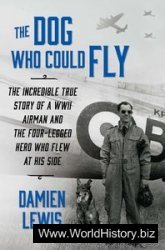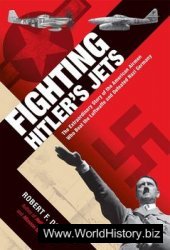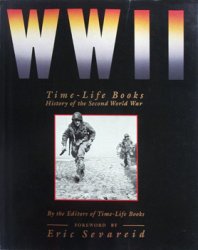BY Rosario Rausa
A legend in U. S. Navy carrier aviation, Paul Gray was the leader of the strike during the Korean War that inspired James Michener’s The Bridges at Toko-Ri. A veteran of thirty combat missions in the Pacific during World War II, he was the commanding officer of VF-54 flying from the USS Essex during the Korean War and served a tour as commanding officer of the Riverine Patrol Forces during the Vietnam War. Paul Gray had a dozen commands and earned more combat decorations than any other officer in the U. S. Navy before he retired as a captain in 1969.
The airplane Gray flew in Korea, the AD-4 Skyraider, was almost as tough as he was. Known to Navy pilots as the Spad, this propeller-driven attack plane also served in Vietnam, where it was a faithful mount for both U. S. Air Force
And Navy pilots. Still, as the following excerpt describes, Gray used up Spads at a fearful rate.
Paul Gray and the Skyraider went together like Patton and tanks. Like the attack bomber, this pilot was durable and could take punishment. He took the reins of VF-54, based aboard the carrier USS Essex, in 1951. Before long he was leading attacks on targets of opportunity with great effect. His method; go in low and press for accuracy. The targets were bridges, railroad tracks, railroad cars, trucks, troop emplacements, and supply depots. Forward air controllers (FACs) on the ground or in U. S. Air Force spotter planes aloft often coordinated attacks, vectoring the bombers toward the targets. Most missions took place during the day. Sorties were often an arduous, butt-busting four and a half hours in length. Casualty rates were high. Gray’s squadron, for instance, suffered 25 percent losses on the cruise, which lasted twelve months in 1951-52. Seven pilots were killed.
A native of St. John, Kansas, Gray was a thirty-five-year-old in Korea, who kept in shape with workouts in the ship’s gym. This helped to sustain him on the long combat flights and certainly didn’t work against him when he had to crash-land his ADs.
We seldom got over a thousand feet above the ground,” said Gray, “and frequently returned to the ship with holes in the Skyraider’s skin from small-arms fire. But the AD was a marvelous machine and could carry the same tonnage in bombs as the four-engine B-17 bomber of just a few years earlier. [A couple of years later at Naval Air Station Dallas, Texas, an AD took off with a load of fuel and ordnance totaling 26,739 pounds, an amount equal to a DC-3 transport carrying twenty-four passengers.] It was a perfect aircraft for close air support and the other bombing and strafing duty which characterized the interdiction mis-
Sion.
For the ADs, a typical close air-support mission load included four hundred rounds of 20-mm ammunition, three 500-pounders, and a dozen five-inch rockets.
Demonstrating a mild disdain for the “call-sign” system with which pilots identified themselves by an officially designated name followed by a three-digit side number, Gray’s group decided on a Walt Disney theme. Gray became Snow White and his wingmen Dopey, Grumpy, Sneezy, and so forth. It was not long after he implemented this system that Gray’s Skyraider took a hit while over enemy territory.
“Happily for me,” said Gray, “shortly after I went into the sea a South Korean picket boat came along and pulled me to safety.” There was more to it than that. Gray’s Skyraider sank quickly beneath him after he splashed into the water. Somehow he unlatched himself from the cockpit, but, as he put it, “I was weighted down by my survival equipment, which included pistol, ammunition belt, Mae West, and various other items. I couldn’t quickly locate the CO2 cartridge toggles of the Mae West, even though they were floating somewhere directly in front of me. I started to sink but got to the toggles in time, and the South Koreans then hauled me out of the water.”
On board the carrier the crew received the good news from Grumpy, Gray’s wingman orbiting overhead. “Snow White is safe!” he reported with a sharp ring of exuberance in his voice.
Wonsan Harbor, where Gray ditched, incidentally, is a major seaport on Korea’s east coast. Shielded from storms by a natural barrier of mountains, it is ice-free in winter. It was, therefore, a reasonably accommodating place to ditch an airplane as long as survivors weren’t left in the frigid waters too long in the nonsummer seasons.
Gray’s philosophy of go-in-low-for-accu-
Racy had its drawbacks. When a bomb released from a fast-moving aircraft explodes, it inevitably sends a pattern of fragments skyward. The pilot has only fractions of a second to pull up and away if he releases at low altitude, where he stands a chance of sustaining hits from his own weapon.
Several days after his first dip in Korean waters. Gray angled his Skyraider toward the mouth of a tunnel in which the enemy had stowed a locomotive. He pickled off (released) a 1,000-pounder and banked swiftly away. The bomb apparently struck just at the mouth of the tunnel, a good hit. Fragments from it slammed into his AD, however, producing ominous thudding sounds. The plane was barely flyable, and since taking it to the ship was in doubt. Gray advised his wingmen that he would try to reach an emergency landing strip called K-55. Somehow he managed to coax the wounded plane southward across the thirty-eighth parallel to the field, where he landed.
On the ground at K-55, mechanics examined the bird, shook their heads, and declared it “dead.” It was scrapped, and Gray was flown out to the Essex. Within twenty-four hours he was aloft in another Skyraider over North Korea on a combat mission.
A few days later Gray swept in low over a
Target, collected no less than fifty-nine holes in the skin of his attack bomber from ground fire, told the carrier that he thought he could recover on board, and proceeded to do so with minimum dramatics. It was almost like another day at the office for Paul Gray.
Fortunately, this plane could be repaired, although the sight of those holes angered one Andrew Syzmanski, a lieutenant (junior grade) and VF-54 maintenance officer tasked with patching up the aircraft on board the Essex. A native of Brooklyn known as much for his salty language as his great repair skills, “Ski” could only ask the rhetorical question, “What is he trying to do? Bust ’em up faster than I can fix ’em?”
Sometime later as Gray was attacking a column of North Korean trucks, an enemy artilleryman caught Gray’s Skyraider in his gunsight reticle. He fired a stream of 37-mm shells toward the speeding naval plane, and one of the charges tore into the AD’s engine. Flames erupted over Gray’s cowling. Instinctively, one of his wingmen transmitted the dreaded message back to the ship: “Snow White has been hit!”
Gray zoomed to altitude and turned his bomber toward the sea and the Essex, fifty miles away. He quickly discovered that when he pulled back his fuel-mixture control lever
(located with the throttle and propeller controls on the port console), thus shutting off the flow of gasoline to the engine, the blaze went out. Of course that also caused the engine to stop. But by manipulating the mixture, intermittently he was able to fly a little, glide a little, fly a little, glide a little.
In this manner he guided his aircraft over the mountains and plains and reached the water, where the temperature was thirty-five frigid degrees.
“At that temperature you could freeze to death, even with an exposure suit on, in less than half an hour,” said Gray. “Indeed, gloveless hands would be useless in five minutes.” (Anti-exposure garments, called “poopy” suits by the fliers, covered the body from neck to feet and were worn over thermal underwear. They were made of waterproof, rubber-type materials and were tightly sealed at the wrists. Large boots were actually integrated with the suit and were part of it.)
Gray spotted an American destroyer moving slowly through the churning sea and descended toward it. He ditched in the vicinity of the ship, extricated himself from the disintegrating airplane, and slipped into the sea. The inferno that was the R-3350 was quenched by the briny ocean.
That was shoot-down number three.
Some weeks later Gray was hit again but managed to limp into K-15, another emergency landing strip south of the thirty-eighth parallel, for shoot-down number four. Some people were beginning to believe that VF-54’s skipper led a charmed life.
North Korea didn’t look at it that way. Newspaper accounts began to mention the exploits of Snow White and his entourage of naval pilots, who were scoring heavily against bridges, trains, trucks, and supply emplacements.
Take the attack on Kap Son, for instance. An enemy base constructed at the foot of a mountain slope near the Yalu River in North Korea, it became the focal point for one of the most daring raids of 1951, if not the whole war.
Intelligence sources had learned that a high-level meeting between North Korean and Chinese Communist officials was to take place there. Gray was selected to lead an attack against the base, a perilous three hundred miles from the Essex. He and his wing-men would have to go without cover from friendly jet fighters.
After examining charts and analyzing the placement of triple A (antiaircraft artillery) and radar detection sites, he decided to take
His flight in low. The plan was to rendezvous after the launch, go feet dry (cross the coastline), and descend to treetop height, skimming over the rugged terrain, which, hopefully, would conceal the aircraft from the probing radar eyes of the enemy. Eight Skyraiders and eight Corsairs, heavily loaded with 1,000-pound bombs and napalm, were catapulted from the Essex in snowy weather. Formed into a loose cruise formation, the sixteen heavily laden planes began their journey.
Navigation at low altitude (in later years such flights would be called sandblowers) is difficult enough even over familiar ground because the pilot’s perspective is radically different from that which he experiences at altitude. Careful preflight planning combined with precise timing and relentless tracking along the prescribed route are critical.
About an hour and a half after leaping from their mobile runway. Snow White and his troops spotted the target — principally a collection of closely spaced, simple, barracks-type buildings. Gray signaled his wingmen to add power for the run-in.
A stunned and bewildered gathering of Chinese and Koreans heard the thunder of sixteen piston-driven power plants, then saw
The wave of planes homing directly toward them.
“Stand by for the pull up,” transmitted Gray over the radio as he approached a preselected initial point.
His wingmen followed Gray in fanlike progression as he pulled his Skyraider steeply skyward, trading airspeed for altitude. Peaking out over the encampment at about 5,000 feet, he banked sharply, pushed the nose over, and dove down. One after the other the Skyraiders and Corsairs followed, releasing their weapons in sequence and racing away to clear the target area.
The first assault lasted only a minute or two but produced a holocaust of orange-red balls of fire followed by a towering display of brown-black, debris-filled clouds. Repeated runs using 500-pounders and then napalm completely burned and leveled the site.
“The beauty of it,” remembered Gray, “was that not one bomb hit outside of a city-block square. Every one was on target.” Days later intelligence sources reported that the attack was extremely successfial and that 510 of the enemy were killed. There were no American losses.
Shortly thereafter the word was passed that the North Koreans were offering
$10,000 for heads of a naval pilot named Paul Gray and his wingmen.
“That’s a lot of money today and was a helluva lot more back then,” said Gray. “I was flattered in a way, despite how disquieting it is to know someone has put a price on your person. This action also influenced my thinking in that if I were hit, I would try, if at all possible, to avoid bailing out over land risking capture. I would take my chances with the sea.”
It was no surprise when superiors began to notice signs of fatigue in Snow White. He developed what someone called a nervous twitch. The Essex’s flight surgeon told him he ought to step down for a while and rest. In fact, it was decided to officially ground him, which meant his complete removal from the flight schedule.
“It was a terribly cold winter morning,” recalled Gray. “The wind was strong and laced with ice as it whipped across the flight deck. But I was airborne and on the way to the target before the word was passed to me that I wasn’t supposed to fly.”
North of a place called Munchon, Gray was executing a strafing attack when.50-caliber ground fire ripped into his plane. Parts of the propeller blades were shot away. Despite this he managed to get the plane
Over water. The Skyraider vibrated horribly en route, and Gray was destined for another arcticlike dip in Wonsan Harbor. He crashed into roiling whitecaps.
Snow White was down again. The message was received in grim silence throughout the carrier. Squadron mates in the ready room paused in their card games. Five times Commander Gray had ridden a Skyraider down to earth or ocean. People were thinking, “The odds can’t be with him this time.”
And yet they were. The destroyer USS Twinning hurried alongside the stricken flier forty minutes after he crashed. The ship dispatched a crew in a rescue boat and retrieved Snow White from the freezing deep. The card games resumed. A wit in the group drafted a sign that was posted in the ready room: “Use Caution When Ditching Damaged Airplanes in Wonsan Harbor. Don’t Hit Commander Gray.”
That was the last time Gray crashed an airplane, but it was not his last mission. He did take a rest as ordered but went on to fly ten more combat hops before the Essex was finally relieved on station and sent home.




 World History
World History









